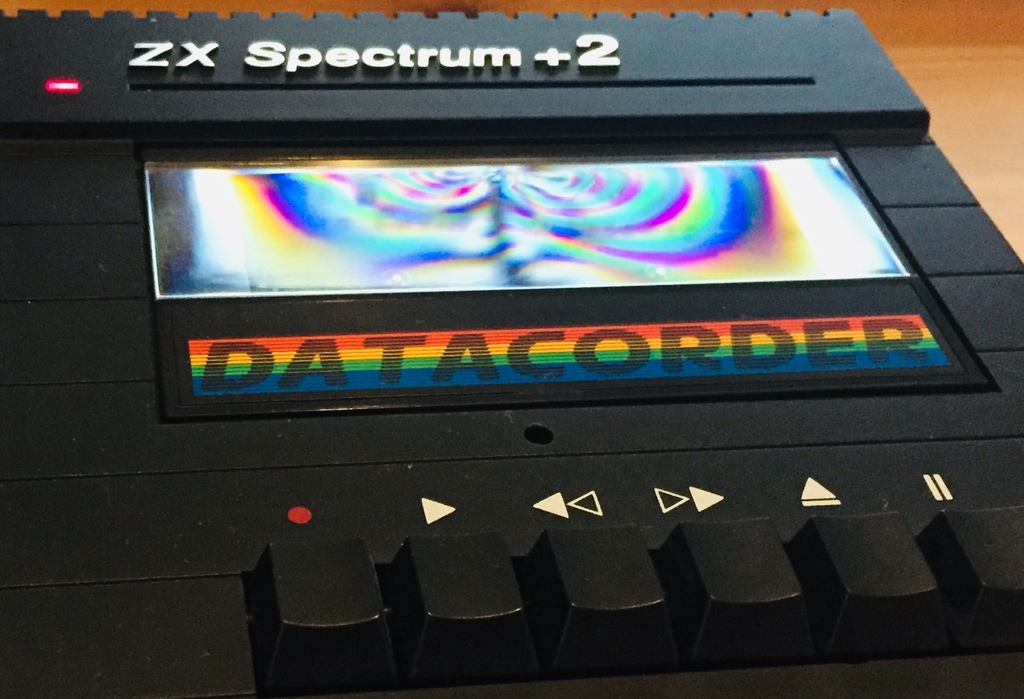
With the ZX Spectrum Plus, the ZX is finally growing up! And yet it was the beginning of the end for the British company Sinclair as a legendary computer manufacturer. Because in 1986 the British competitor Amstrad acquired the trademark rights for Sinclair and released with the Spectrum +2 and +3 two successors of the 8-bit computer with 128kB memory – one with built-in cassette recorder drive and the other with floppy disk drive. Thus Amstrad took over the design from its own computer line, which also had a built-in cartridge drive or floppy disk drive.
I am especially proud to have a Spectrum +2A in my collection, because this model was not very widespread in Germany.
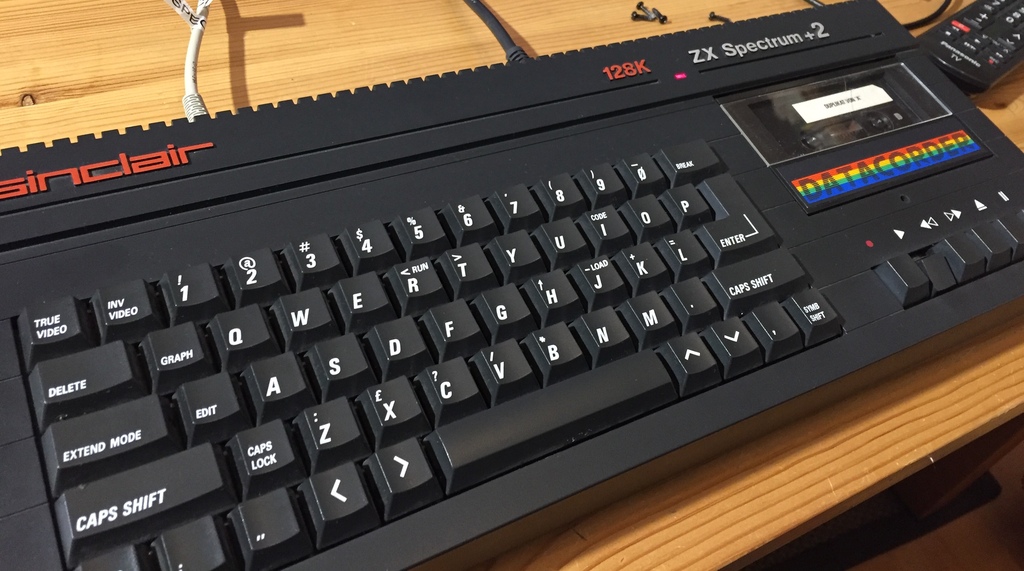
By the way, my Spectrum +2A with black case, which was released in 1988, was again a successor of the Spectrum +2, which originally had a grey case.
Technical data as follows:
CPU: Z80A
Speed: 3.5MHz
ROM: 64KB (32K for 128K mode, 16K for 48K mode, 16K for +3DOS)
RAM: 128KB (8 x 16K banks)
Full-stroke 58 key Keyboard (same layout as Spectrum+)
Colour Graphics
Sound – 3 Channels, 7 Octaves (Yamaha AY-3-8912)
RGB, RS232/Midi
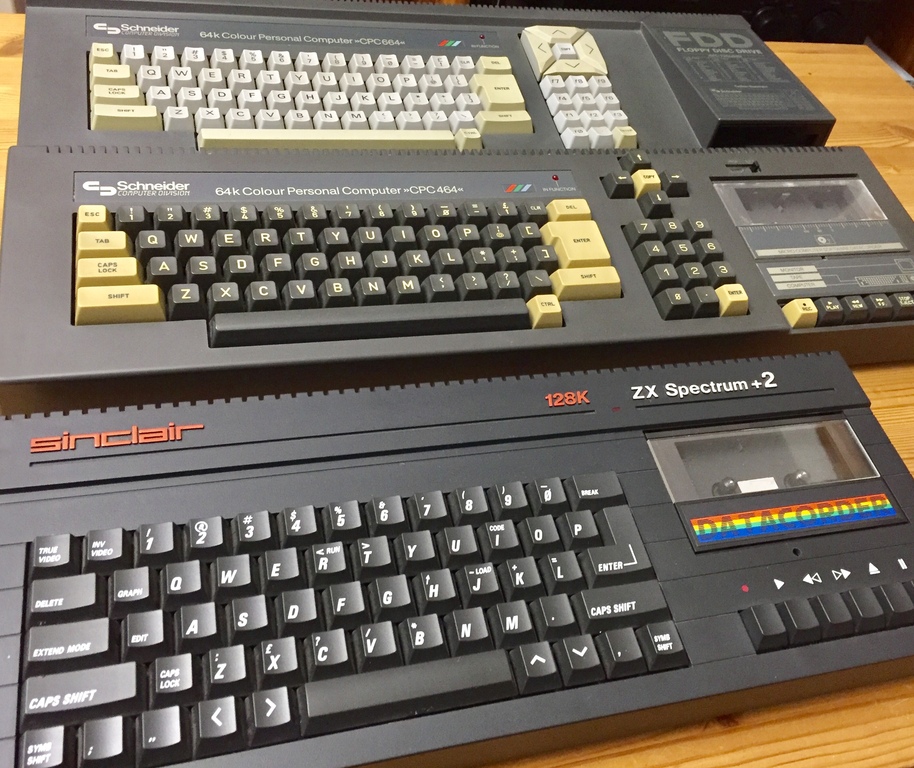
Compared to the first ZX Spectrum the +2 was already technically much better equipped. Not only because of its 128KB RAM and additionally 64KB ROM it was already very well equipped for that time. Furthermore it finally had its own sound chip from Yamaha with 3 channels and a MIDI connection. You always have to keep in mind that Sinclair’s philosophy was to build very cheap and simple computers that were affordable for everyone. In the UK the success of Sinclair or Amstrad was undisputed for a long time, but on the world market the competition between Commodore and Atari was simply too great. A big shortcoming is and remains the missing sprite ability, which is just as important for games and made the C64 so successful. That was surely one of the main reasons why the Sinclair ZX Spectrum and its successors did not find such a large spreading world-wide. Unfortunately the larger memory and the finally available sound chip could not make up for that. Still, the ZX Spectrum is and remains a cool machine. Especially the Z80 CPU made many people think about computers later on in their careers. And finally a real keyboard … a dream 😉
The inner parts
With the Spectrum Plus/+2/+2A/+3A there was a confusing number of board revisions and some special features to be considered. So if you’re thinking about getting one of these devices nowadays, you should check the various websites about the ZX Spectrum. There are also interesting mods, if the sound or video output is not good enough (more about that later).

A common weak point of these devices are the drive belt from the cassette drive, which can become porous after many years, and the paper-thin flat cables for connecting the keyboard.
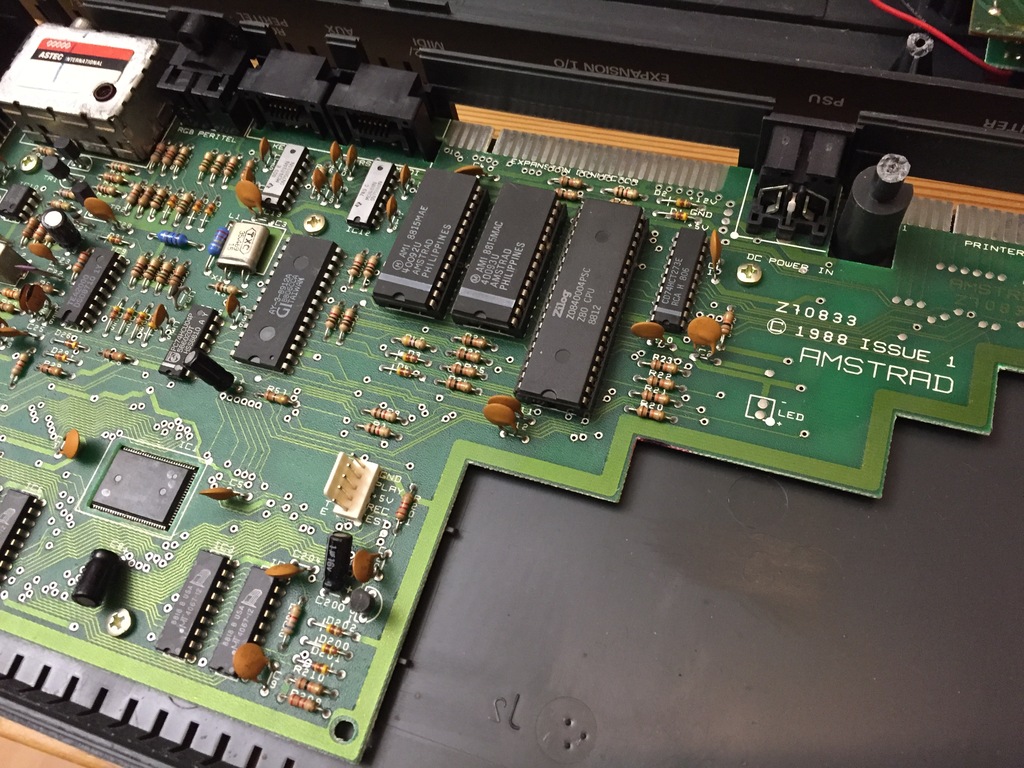
Connectors

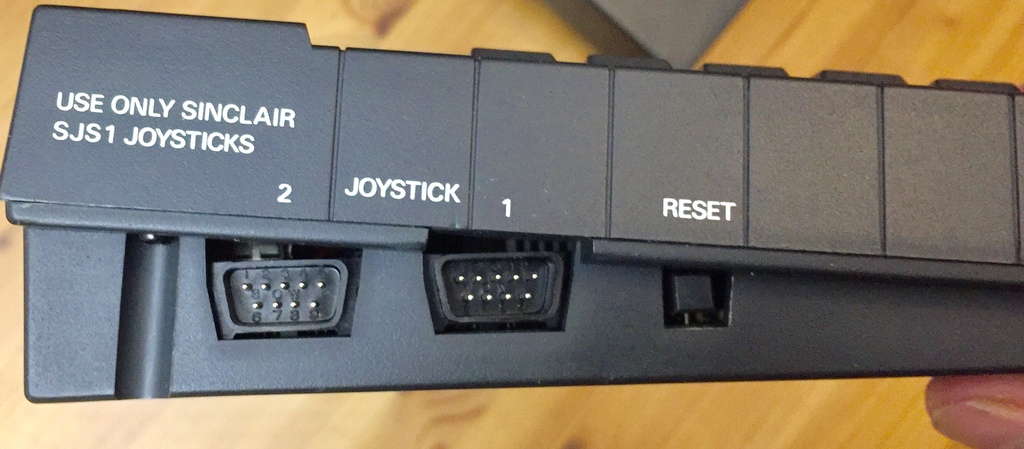
RGB-SCART Video Mod
Unfortunately I still had a problem with the RGB video output to the SCART connector of my LCD TV. As you know, the connection via analog antenna cable (RF connector) is the worst way to get a picture on the TV, because the picture is very unstable and noises – depending on how fine you can adjust the transmitter setting. That’s why since the ZX81 there have been so-called video modifications that turn the RF connector into a composite video. The +2 also has a round 8-pin RGB connector, which in itself transmits a perfect picture via SCART to any TV. Unfortunately, Amstrad has a few pitfalls that need to be avoided. On my LCD TV from Panasonic, for example, the SCART connector is only switched automatically from Compsite to RGB as soon as the correct voltage is applied to pin 16 (BLANKING) of the SCART connector. A manual configuration is not provided.
The first test of an RGB SCART cable with my Spectrum +2A therefore failed and I only got a very dark, unreadable picture.

But at first I didn’t know what the problem was, so I contacted the Sinclair ZX Forum https://sinclairzxworld.com/viewtopic.php?f=21&t=3678, who were very competent and friendly. With my new knowledge and a bit of googling, I came to this site: https://www.retrocomputershack.com/Technical-Info/Spectrum+3-Blanking-Mod/index.html, where a simple mod solved my problem.
I then soldered the corresponding resistor at my +2A and lo and behold, the picture is now perfect! But attention! There are many different board variants, with partly different assignment of the RGB connector! So please check if this mod really works for you! I don’t want to hear any whining if you destroy the board with it. In any case I don’t take any responsibility for it 😉

Does somebody bother with my soldering skills? 😉
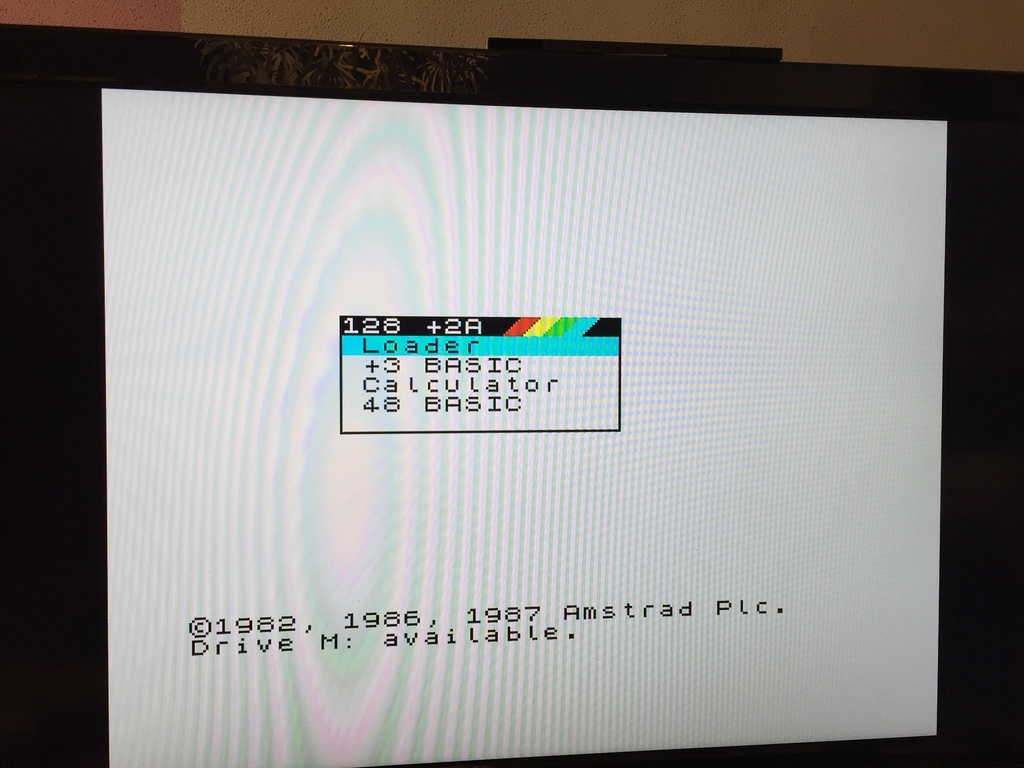
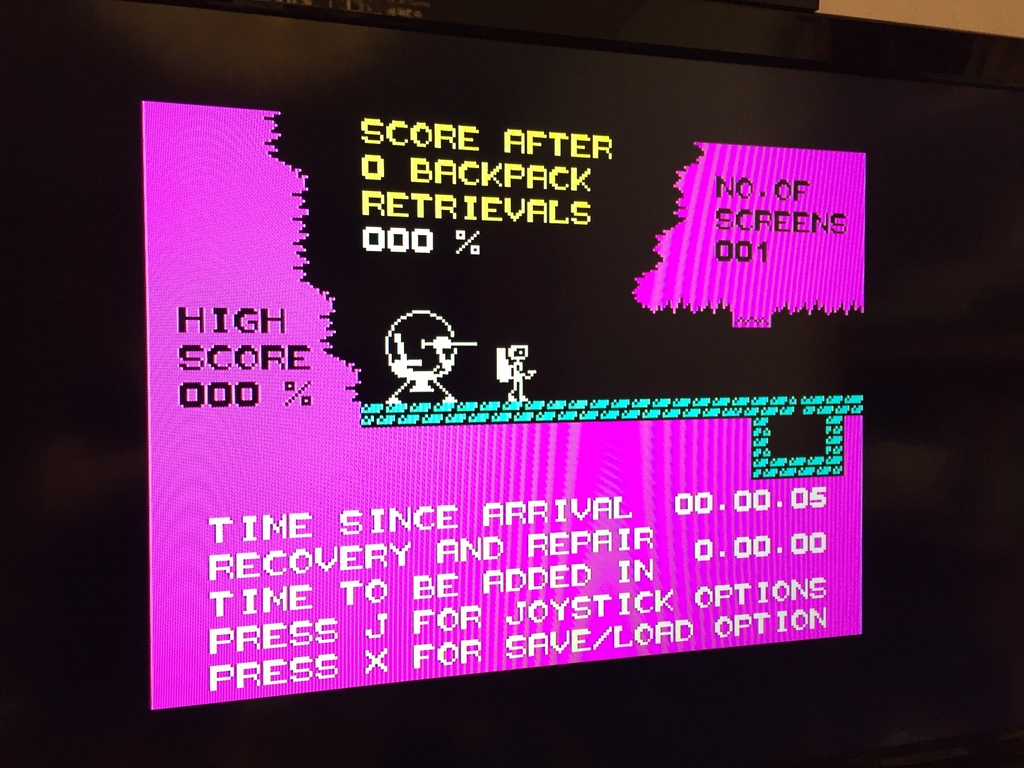
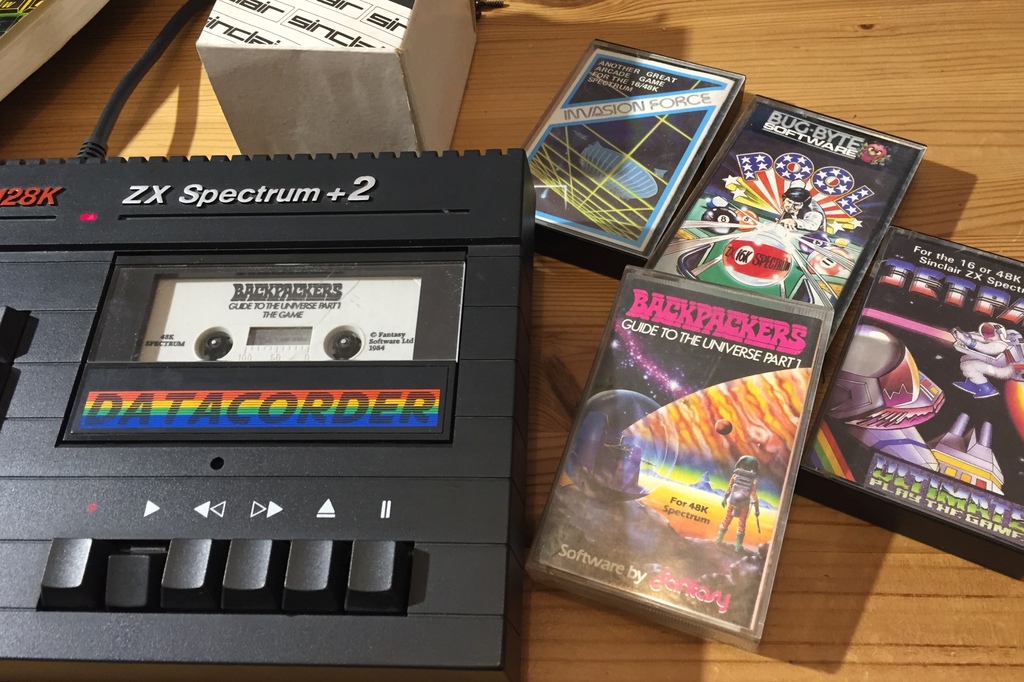
Video game stories about the ZX Spectrum
While browsing the ZX Spectrum I also came across a great blog website about video game stories from the 80s, run by André Eymann. There he and other guest bloggers write about their gaming experiences from their youth. The site is very lovingly made and very enjoyable. Among other things, someone there writes about how he found his love for computers and programming and about his favorite games on the ZX Spectrum. https://www.videospielgeschichten.de/eine-kleine-geschichte-ueber-den-zx-spectrum/ (Thanks to André for letting me link his site)
Selftest
ToDo-Liste: Build-In ROM-Test https://www.dataserve-retro.co.uk/contents/en-uk/d66.html
